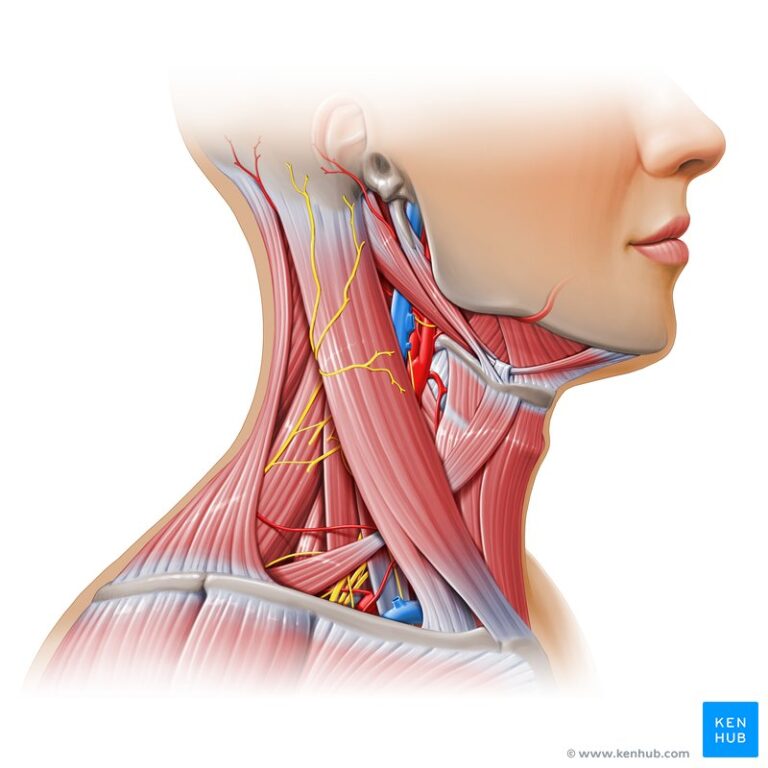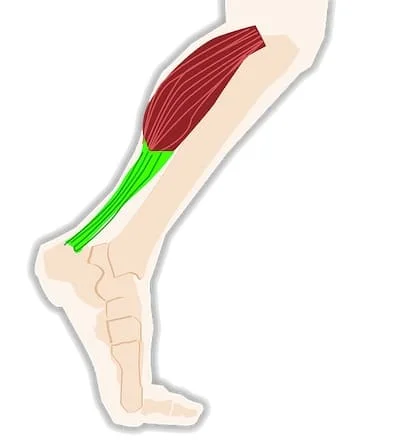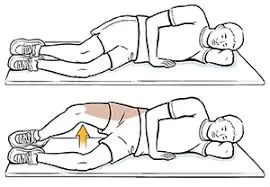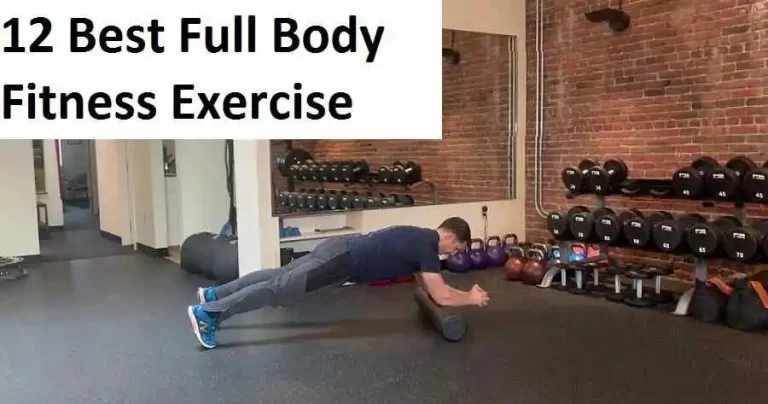Trapezius muscle stretching exercise
Table of Contents
What is trapezius muscle stretching exercise?
- Trapezius stretching exercise is the best & easy to perform at home to increase the flexibility of the neck to shoulder region. This exercise also helps to reduce neck pain as well as stiffness.
- The trapezius muscle is situated in the upper back. This is the triangular shape muscle, extending to the width of the shoulders & from the skull to the thoracic spine, in the middle of the back. The trapezius has three segments, superior, middle, & inferior parts, and each one is involved specific motions of the shoulders & neck. Trapezius stretching relaxes the neck.
What is the purpose of the trapezius?
- This large muscle helps you to move the body & increase good posture. This has 3 parts that help you with specific kinds of motions combine, the 3 parts of the trapezius muscle help you move the head, stand up tall & straight, bend or twist the upper body as well as lift the arms. The areas of the trapezius are:
- Upper trapezius: This helps you to lift the arms, the neck & head rotation, extension, turning, as well as tilting, & shrugging off the shoulders.
- Middle trapezius: This helps you to pull the shoulders back & extend the arms. This stabilizes the shoulders when the components are in motion.
- Lower trapezius: This un-shrugs the shoulders or brings them downwards opposite to the ears. This stabilizes the spine while some motions such as twisting as well as bending.
This also has some expected benefits such as:
- Decrease tingling or numbness in one or both arms.
- Reduces tension in the neck: Many people have neck tension as well as pain daily, likely owing to poor posture that results from too much use of computers, smartphones, & televisions.
- Promotes Shoulder Mobility: Decreased shoulder mobility may result from the lack of stretching & physical activity, as well as from poor posture, so performing the stretch may increase overall shoulder mobility.
- Loosens Thoracic & Cervical Spine: If the patient sits at the desk the whole day, there is a chance that the spine cannot move at its full range of motion. The upper trapezius stretch can help you to restore mobility to the spine.
- Improves Posture.
What are the types of trapezius stretching
There are some common types of trapezius stretching are below:
- Self-stretching
- Cat-cow pose stretch
- Ear-to-shoulder stretch
- Hug stretch
- Crocodile pose stretch
- Thread the needle stretch
- The child’s pose with side reaches
- Assisted trapezius stretching
Self-stretching
- This is the best technique to stretch the trapezius muscle.
- How to do this stretching exercise: Take the sitting or even standing position. Place the ipsilateral hand on the back & touch the opposite side of the back.
- Now flex the head opposite side. If the patient wants to stretch on the right side then flex the head on the left side.
- When the patient feels stretched then stop there. Hold that position for 30 seconds & then do it on the opposite side.
- Do it 2-3 times.
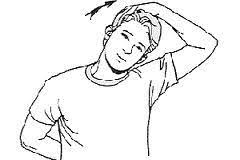
Cat-cow pose stretch
- This move decreases tension in the cervical spine & stretches the back muscles as well as the front of the upper body. When you use the cat-cow pose for the trapezius, the patient has to focus on the area right between the upper scapulae, alternately releasing & arching the neck.
- How to do this stretching exercise: Take all four limb positions on the ground, like the tabletop position. The hips over the knees, the shoulders, the elbows, & the wrists are in the same line perpendicular to the ground.
- When you inhale, raise the head, chest, & sitting bones, sink the belly, & arch the back.
- During exhalation, round the spine toward the roof and return the head into the Cat pose.
- Continue deep breathing, move the breath as you perform, inhale as arching the back & exhale as rounding the back.

Ear-to-shoulder stretch
- How to do this stretch exercise: The patient can perform in sitting or even standing, sitting on the floor, or on the mat, as suggested.
- Slowly & gently, take the left ear toward the left shoulder. This is natural for the right shoulder to raise as you perform this. If this happens, move the head back toward the center until the patient can relax the right shoulder back down.
- Lift the left hand up & over the head, resting the left hand on the right cheekbone. Do not pull on the head, Simply rest the hand there for mild pressure. This gently stretches the upper trapezius.
- Hold the stretch for 30 seconds.
- Slowly release this side, & then ease the right ear toward the right shoulder & complete the stretch on the opposite side, breathing deeply through the stretch.

Hug stretch
- To do this stretching exercise: Stand tall as well as straight.
- Reach the left arm across the chest & hold the right shoulder. Do the opposite on another side, holding the left shoulder with the right hand.
- Press down on the right shoulder with the left hand during leaning the head to the left side.
- Hold the stretch for 20 seconds.
- Repeat on the opposite side.
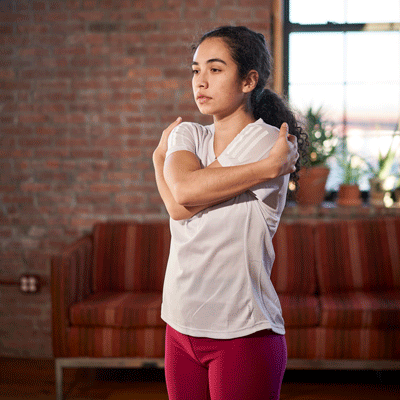
Crocodile pose stretch
- This move may be uncomfortable. This may feel awkward to relax face down, but if the patient slowly breathes in & out, this may help relax the trapezius.
- How to do this stretching exercise: Take the prone position & distance between the feet as much as the shoulder-width, & place the hands one on another under the chin.
- When the patient takes the starting position, lie flat & put the forehead on the hands. It will release lower back compression also, but the main thing you want to focus on here was lengthening the spine & releasing tension in the neck as well as the upper back.
- Deep breathing & relaxation.

Thread the needle stretch
- This stretch targets the mid to upper back & shoulder.
- How to do this stretching exercise: Start on the hands & knees in all four limb positions, just as you performed for cat-cow.
- The hands should be just below the shoulders, the knees below the hips with the core engaged, as well as the spine is neutral & Straight from head to hips.
- Inhale as well as lift the left hand from the floor without moving the weight or even the body to the right side.
- As you breathe out, lower the left shoulder to the floor as you reach the left hand, palm facing to a roof, under the right shoulder & across the body as far as you go.
- Stop when the patient feels the stretch through the back of the left upper back & shoulder.
- Hold the stretch for 20 to 30 seconds before coming back to the starting position.
- Repeat to the other side & complete 2-3 sets on each side.
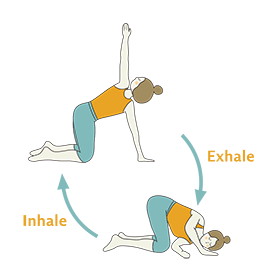
The child’s pose with side reaches
- The child’s pose is a very good relaxation stretch that helps the patient to relieve tension through the upper to mid back.
- How to do this stretching exercise: Begin on the hands & knees in all four limb positions, just as you do for the other trapezius stretches.
- This time while the neutral tabletop, bring the feet together, then sit back on the feet. If the patient wants to walk in the position, the knees move slightly outward to create space.
- Bend the upper body forward, and relax it between the thighs as you extend the arms overhead. Relax into this pose & put the forehead to rest on the ground or even a mat.
- Hold this position for 30 seconds & do deep breathing.
- After 30 seconds, keeping the lower body & hips steady, move the hands as far as you can to the left, increasing the stretch through the right side.
- When the patient feels the stretch in the right upper back & shoulder, hold that position for 30 seconds.
- Then move the hands back to the center, then as far as you can to the right, repeating the stretch to the other side.
- Do it 2 times.
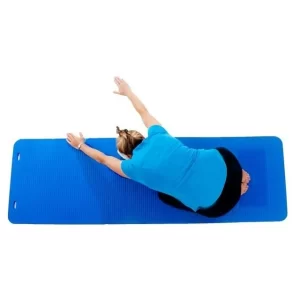
Assisted trapezius stretching
- How to do this stretching exercise: The patient needs the therapist or the person for assistance. Take the sitting position on the chair. Make sure the assistant stands behind the back.
- Place the assistant’s hand on the right side of the head, & the other hand on the shoulder.
- Take a deep breath & give pressure to the left side flexion by the hand which is placed on the head.
- If the patient feel stretched then hold that position for 30 seconds. Repeat the stretch 2-3 times.
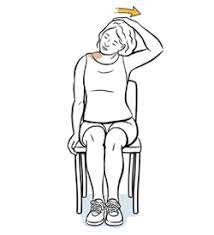
Common Mistakes while trapezius stretching
There are some common mistakes the patient does while stretching is:
- Arching the Back: Avoid arching the back while doing the upper trapezius stretch. Hyperextension of the spine indicates that you do have not to use the core muscles. To use the core, pull the umbilicus into the spine & think of generating a strong cylinder around the spine.
- Hunching the Back: On the other side, hunching the back specifies that you do not have the essential range of motion to do the upper trapezius stretch, so the body repays by hunching over in an attempt to reach the position. If the patient does hunching the back during the stretch, lower the intensity of the stretch.
- Overstretching: Minor overstretching may not cause the injury but temporary pain or even soreness. If the patient feels a stabbing or sharp pain while stretching, that means you may overstretch the muscle & which causes strain. This Is very important to avoid overstretching in neck muscles, due to the neck muscle strain or even ligament sprain can be very problematic.
Safety and Precautions
- The patient can certainly do the upper trapezius stretch during standing, but if you feel uncomfortable, sit down. The patient will still get the same stretch for the neck.
- Avoid overstretching while trapezius stretch. The patient is doing the stretch to increase the range of motion, but you have to respect the present range of motion.
- Gaining mobility as well as flexibility takes time, the muscles will not become more flexible overnight. This is normal if you feel mild discomfort during stretching but do not feel pain. If the patient feels pain, lower the intensity of the stretch or stop.
FAQ
Why is the trapezius so tight?
The usual suspect for the faulty upper trap is the everyday desk posture, which may mean that can be either shortened or even
lengthened for hours at a time. Or heavy workouts may make the traps knotted & sore, especially if they include an overload of heavy
pulling exercises.Can tight traps cause shoulder pain?
The highlighted is the trapezius muscle. Poor posture, as well as repetitive movements, are frequent contributors to neck & shoulder
pain, largely caused by trapezius muscle overactivity as well as tightness.Can the tight trapezius cause nerve pain?
With muscular spasms & tightness in the trapezius muscles just above the collar-bones, pressure on the bundle of nerves (the brachial
plexus) as well as blood supply to the arms may happen & create symptoms of heaviness, aching, fatigue, as well as numbness, radiating
down the arms to the fourth & fifth fingers.How long does the strained trapezius take to heal?
The trapezius strain can hurt you for about one week or two if it is mild. Mostly, mild neck strains can self-heal in about a month, but if
you got a severe Trapezius strain, this might take almost 12 or more weeks to heal completely.Is trapezius pain serious?
The strain in this muscle is different from the upper back sprain. The sprain occurs when the ligament, or even a band of tissue that
connects bones together at joints, is stretched or even torn. If the patient strains the trapezius muscle, the pain can be mild or severe,
depending on how badly the patient is injured.

